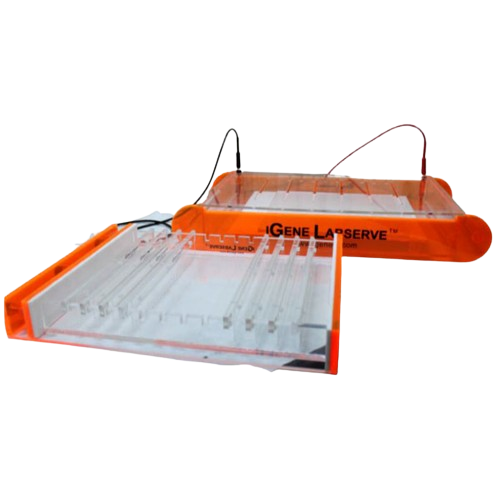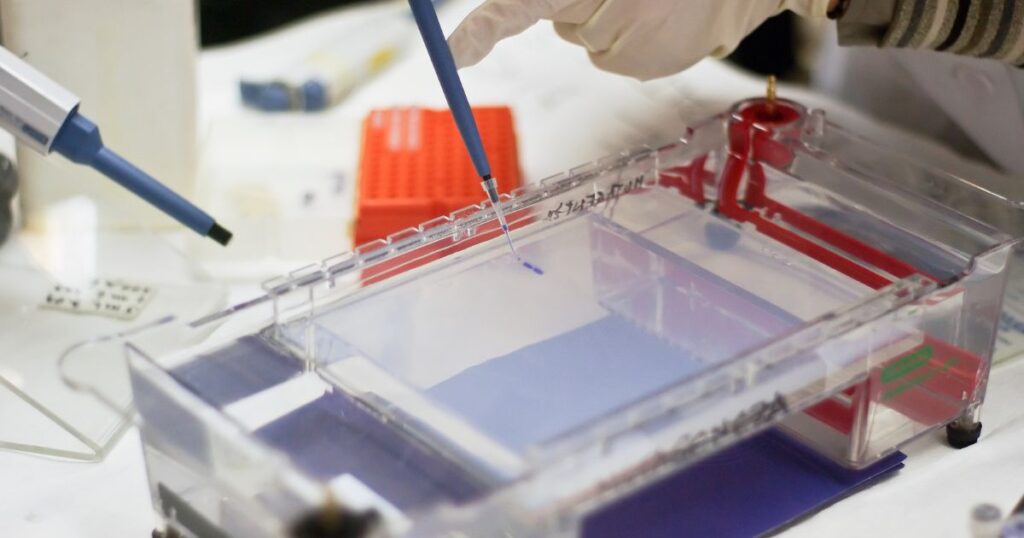Researches on molecular biology are all set to reach newer heights. Thanks to feature-rich laboratory instruments and emerging that are here to make a mark. The biological experiments get the much-needed boost with gel electrophoresis technique that helps in the separation of macromolecules like DNA, proteins and RNA. Typically, the technique is widely used across laboratories to analyse the samples of proteins, DNA, and RNA.
What does the process involve?
The gel electrophoresis technique leverages the difference of size when dealing with different varieties of molecules in protein samples. Usually, the larger molecules move gradually and the smaller ones move faster. However, the electric charge present is responsible for controlling the movement of molecules. There are two electrodes of opposite charges preset on the system that pulls the molecules towards them.
Understanding the procedure of gel electrophoresis
What to know the mechanism of gel electrophoresis. It will help you get deeper insights about those applications that involve this technique. As the name suggests, the technique uses a gel-like substance called agarose, which is extracted from seaweed. It has a porous texture that helps in separating the macromolecules of varied sizes. Here is how the process works:
- An electrophoresis chamber is used for this mechanism in which the gel-like substance called agarose that stays submerged in a salt buffer solution. The chamber has two electrodes on either ends with opposite charges.
- A pipette is used to load the samples into the tiny gel wells and once the loading is complete, an electric charge comprising a specific volt is applied.
- The molecules are charged up and begin moving toward the electrode; while the positively charged molecules move toward the negative electrode, the negatively-charged molecules move toward the positive electrode.
Once the migration process is over, a dye is applied to the gel to understand the separation bands.

Applications of gel electrophoresis
The gel electrophoresis technique has gained popularity and widely used across laboratories due to the following reasons:
- While the preparation of the process is easy, only a small quantity of gel is required for this purpose.
- With small quantities of gel a large number of samples can be separated easily
- Better resolution is obtained in the process
- Requisites amount of protein can be recovered in the process
The applications of this technique are many but listed here are the commonest ones you need to know:
- DNA analysis and fragmentation
One of the significant applications of the gel electrophoresis technique is in DNA analysis and for the study of DNA fragments. DNA or deoxyribonucleic acid is greatly impacted in the presence of electric current, and is consistent toward negative charge. When any electric field exerts pressure on it, it disintegrates into smaller and larger fragments. Different fragments of DNA are differently impacted based on the intensity of electric current. With the application of the gel, the fragments of the strands tend to freeze. Once they separate, the electric charge is removed and the fragments are considered for study and research.
- Analysing the result of polymerase chain reaction
One of the most popular methods used for analysing the product of polymerase chain reaction is the electrophoresis gel technique. It helps in separating the DNA products based on charge and size. The reason why this technique is used in the analysis of PCR product is the ease of conducting the procedure.
- Analysing genes associated with illnesses
The gel electrophoresis technique is widely used to analyze, separate, locate, and purify DNA fragments. Wondering what the reasons are for using this technique in analysing the genes? It is simple, can be performed speedily, and can separate even those fragments that cannot be separated using other procedures.
- Studying the structure and functions of proteins
It is also used to determine the heterogeneity, purity, and degradation in various protein samples.
- Determining antibiotic resistance
Antibiotic resistance occurs when the drugs used for destroying them do not respond adequately. With the gel electrophoresis technique, researchers claim the extent to which people may develop resistance to antibiotics.
- Cloning
One of the crucial roles that this technique plays in cloning is in the analysis of DNA fragments. Researchers usually extract DNA fragments from multiple resources and by applying this technique it is easy to determine the size and the genetic makeup of the sample.
- Blotting for analysing the macromolecules
Different blotting techniques are usually implemented for analysing the macromolecules. For instance, southern blotting is used for analyzing DNA and western blotting is used for the analysis of protein. Furthermore, northern blotting is used for analysing RNA and eastern used for detecting carbohydrates. The gel electrophoresis technique aligns with the blotting procedure and is widely used in all the blotting techniques.
- Studying the evolutionary relationships
The technique goes well when solving various problems and nuances of evolution like the types and amount of genetic variation and also for determining the genetic differences between different species.
Things you need to know about gel electrophoresis
Although visualization of DNA fragments and gel electrophoresis technique go hand in hand, the technique was integrated in biomedical research in the later stages. Previously, centrifugation technique was used for the separation of DNA. Originally, a radioactive element used to be added in this procedure, which compromised the safety of the process but the scenario has vastly changed.
Today, ethidium bromide was widely used as one of the safest methods of staining for differentiating the bands. Moreover, the process can handle bigger sizes of DNA molecules. Agarose gel solidifies and melts at two different temperatures. The method is not just for separating DNA, proteins, and RNA but also used for the isolation of various nanoparticles like zinc oxide, silver, gold, and silicon dioxide.
The gel electrophoresis technique is gaining momentum easily. Want to get your facts right and know more about streamlining laboratory procedures? Visit https://www.igenels.com/product/horizontal-gel-electrophoresis/ to discover more about our horizontal device made from high-quality polycarbonate. It is one of the few techniques that have revolutionized the field of biology. Scientists use this incredible tool for extensive research and add newer perspectives to the laboratory procedures.

